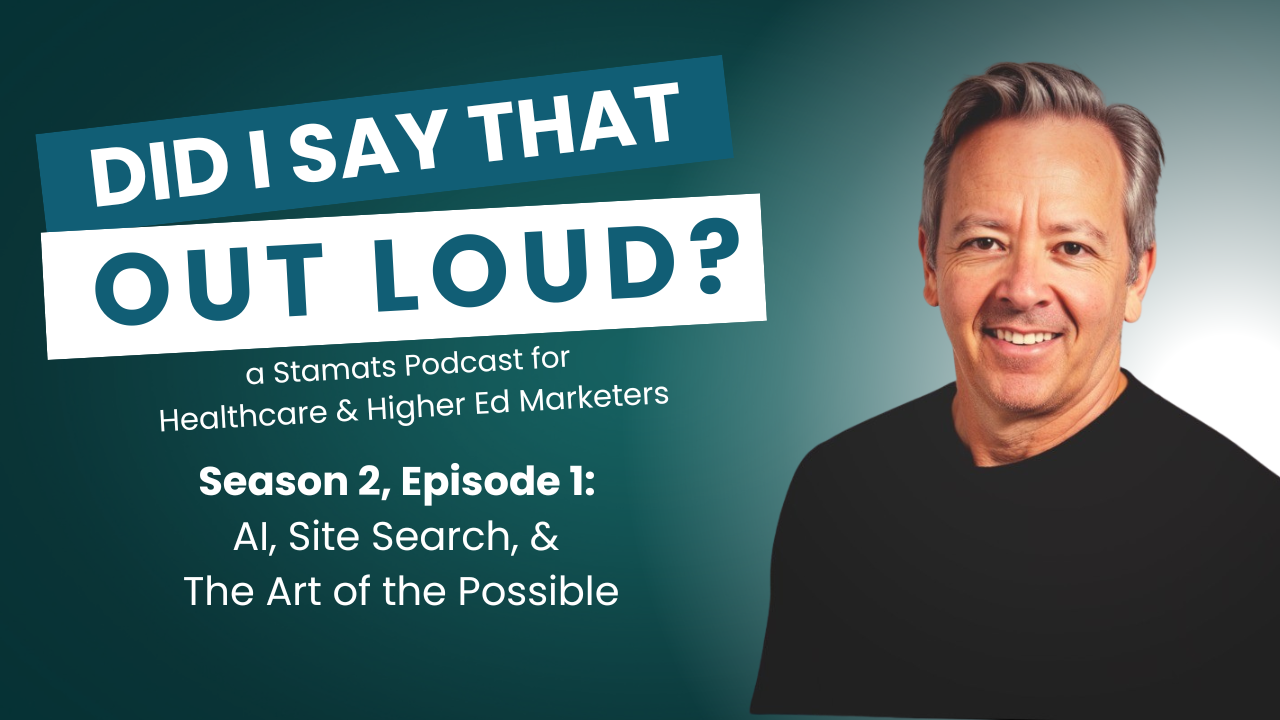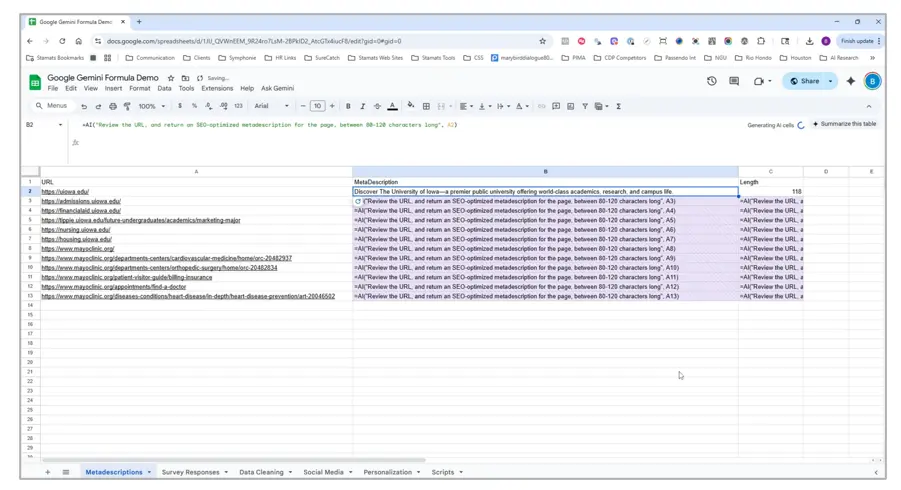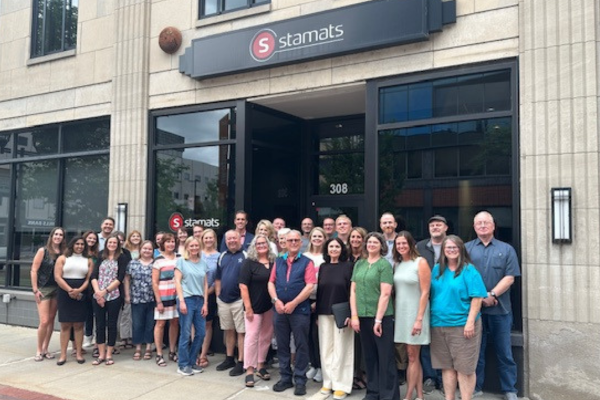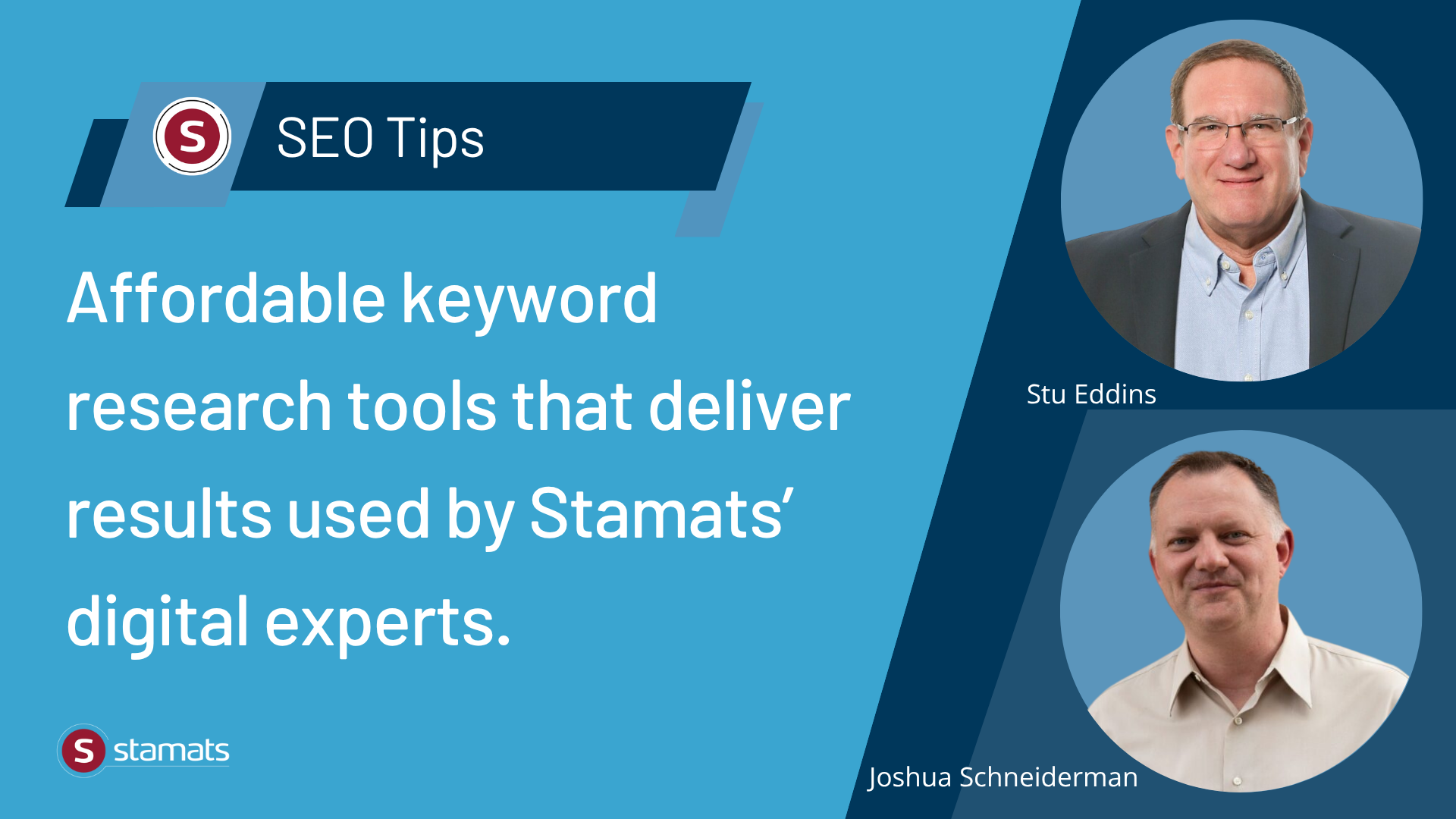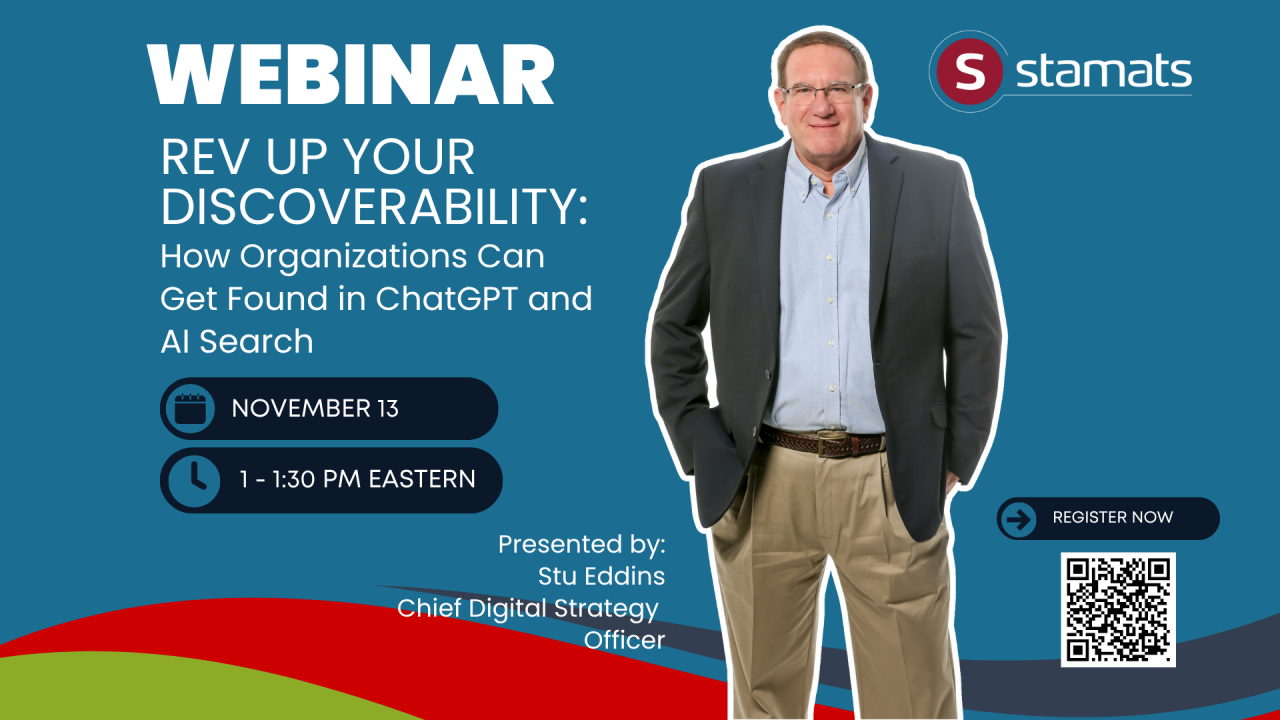Category: Digital Marketing
-

‘Do You Do SEO?’ We Do, and You Should Too
-

Want to Get Found in AI Search? Start With Really Good SEO.
-

S2, E1: AI, Site Search & The Art of the Possible
-

5 Simple Ways AI in Google Sheets Can Save You Time
-

6 Signs It’s Time for a Website Redesign
-

Why Our Agile Agency Ditched Timecards
-

Is Schema Markup Necessary for AI Discovery?
-

The Best Budget-Friendly Keyword Research Tools as Recommended by the Stamats Experts
-

Webinar: Get Found in AI Search


